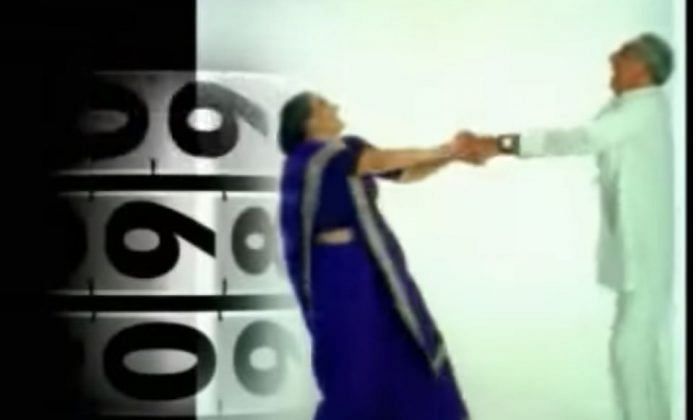New Delhi: Sometimes all you really need is an inventive advertising strategy to see the glass half-full…of milk.
For children and parents of the golden 1990s — a decade marked by summer times spent listening to old cassette tapes and competing to blow the biggest Boomer bubble at school — just hearing the words “Doodh Doodh Doodh Doodh Doodh” still holds the power to make their heads bob from side to side, over 20 years later.
“I remember, my siblings and I used to sing the song along with the ad playing on the television. It made milk look irresistible,” recalls Heena Saran, a 31-year-old housewife and former journalist, proceeding to sing “Doodh hai must in every season, piyo doodh for healthy reason, rahoge phir fit and fine, jeeyoge past ninety-niiiine…doodh, doodh, doodh, doodh…”
In the early 90s, milk, that regular household staple, had suddenly faced an unlikely challenge from the new kid on the block — soft drinks. As India opened its doors to a host of new international FMCG products post economic liberalisation, school-going children got regular access to many more aerated drinks and the sweet, addictive taste of artificial flavouring.
The Gujarat-headquartered National Dairy Development Board (NDDB) just couldn’t let this happen, and along with founder Verghese Kurien — called the Milkman of India, who is also credited as the genius behind India’s largest dairy brand, Amul — came up with a plan to make doodh cool again.
“Consumers were flooded with options of health drinks, juices and soft drinks as the economy opened up. It became imperative for the NDDB to advertise milk as an essential health requirement,” explains Santosh Sood, former COO, Rediffusion Y&R, a brand and advertising consultancy.
In 1996, five years after economic reforms, the Piyo Doodh campaign was launched, reminding kids and grown-ups that “doodh hai wonderful, pi sakte hain roz glass full” and “garmi mein dalo doodh mein ice, doodh ban gaya very nice.”
The simple rhyme scheme was accompanied by Indians of all ages (even a mime artist and a Kathakali dancer) enthusiastically jiving, singing and falling in love with a glass of milk. Joyous Indians flaunted a glass of milk in their hands and a milk moustache on their face, and the ad was an instant hit, destined to become a classic.
Also read: The sarkari cola: How Janata govt launched its own fizzy drink after Coca-Cola left in 1977
Nourishing Amul’s bottom line
The campaign is often confused as an advertisement of brand Amul instead of the NDDB, which is recognised as an institution of national importance under an act of Parliament.
R.S. Sodhi, managing director of the Gujarat Cooperative Milk Marketing Federation (GCMMF) that sells products under the Amul brand, tells ThePrint, “Amul will remain grateful to the campaign which helped push the demand for milk.”
Sodhi believes the campaign gave various reasons as to why drinking milk every day is necessary. “The ad was made for kids, but also for young Indians who were working very hard to nurture the new India post-reforms.”
It wasn’t only children that needed the necessary benefits of calcium, protein and various vitamins from milk. Before the economic reforms, middle-class Indians primarily worked in dingy offices of government-run companies — their job security by and large resulting in a stable, if not super-wealthy life.
But post-liberalisation, with the privatisation of jobs, Indians had to outperform each other for higher pay cheques.
With an increase in incomes and work stress, plus aspirations that liberalisation brought with it, people needed to maintain a higher standard of health. From jogging to gymming, aspirational Indians wanted to be fit to work harder.
“Being a health freak was not just an ‘in thing’ during those days. It was a requirement,” says Santosh Desai, CEO, Future Brands.
How Doodh ad was made
Conceived by Kurien, the Doodh campaign was designed by FCB Ulka, a global advertising agency.
“The brief given to the agency was to show milk as a ‘fancy drink’ because kids and youngsters were being pulled in by cola brands,” says Ambi Parameswaran, who was vice-president of FCB Ulka in 1996 when the campaign was made and launched.
“Indians were attracted by Cola brands which promoted themselves as youthful and healthy products. This was hurting the market of milk. We had consciously designed the jingle in Hinglish (Hindi and English),” adds Parameswaran.
“The other objective of the advertisement was to urge people to look for a symbol of the NDDB, which is like a drop of milk, before buying. The last line of the advertisement showed the logo,” Sodhi explains.
Kids who otherwise changed channels as soon as an ad break came would wait till the end of the Doodh ad because they didn’t want to miss the famous baritone “Moooooo“.
The drop-of-milk logo symbolised the Operation Flood movement started by Kurien for the NDDB. He started the White Revolution in India in 1970 with an aim to create a nationwide milk grid. The movement made India self-sufficient in the production of milk and its products.
The campaign had over a dozen faces across age groups, from playful kids, teens, suited-booted adults, a body-builder, dancer, a middle-aged and elderly couple to even popular models such as Ashish Soni and Isha Koppikar — all looking thrilled to be drinking the one drink that most children hated.
“While the ad was not a breakthrough in creativity, it was visually and audibly a pleasing advertisement which made drinking of milk sound cool and look tastier,” says Desai from Future Brands.
The campaign won over the nation in the 90s and today, more than two decades later, it is counted as a classic. In 2014, Mumbai-based comedy and creative agency All India Bakchod (AIB) paid a vocal tribute to iconic 90s ads, including Vicks, Nirma and, obviously, Doodh.






